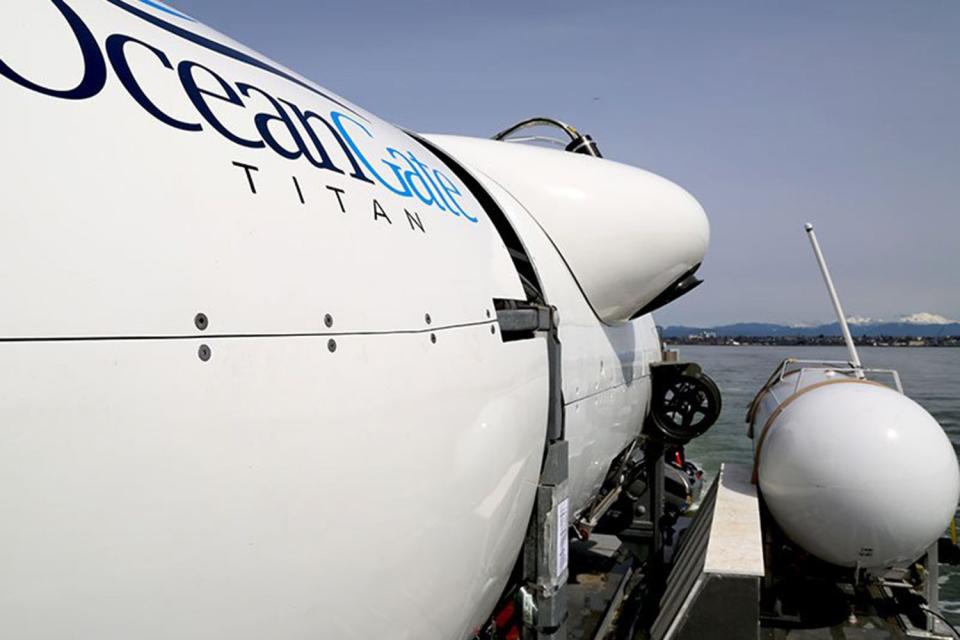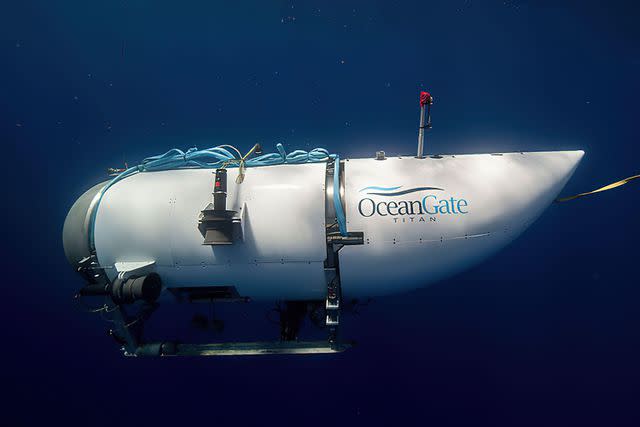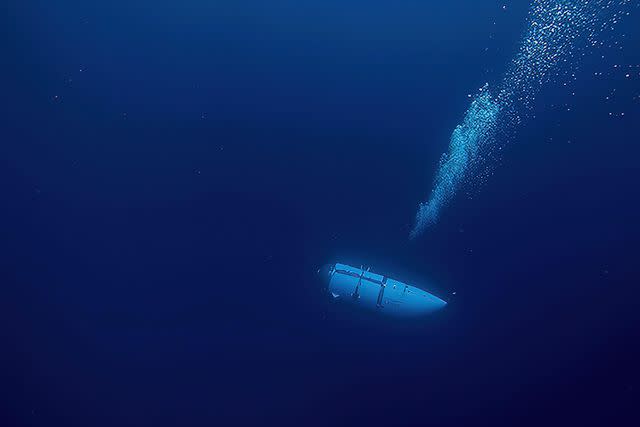'Titan' Sub Passengers 'Died Instantly' in Implosion, Expert Says: 'Terrible, Tragic Thing'
“I’ve often heard it described as happening faster than the brain can process what’s happening," says a journalist who has written extensively about deep sea exploration

EyePress News/Shutterstock
OceanGate submersible TitanThe five passengers aboard the Titan likely “died instantly” when the submersible imploded during a journey to the Titanic, an expert tells PEOPLE.
Multiple pieces of the missing sub were located near the Titanic while a remotely-operated vehicle (ROV) from the Canadian vessel Horizon Arctic searched the area on Thursday, Coast Guard officials said at a press conference in Boston on Thursday.
The Horizon Arctic discovered the Titan’s tail cone about 1,600 feet from the bow of the Titanic, United States Coast Guard Rear Admiral John Mauger said. Additional debris was found that is “consistent with the catastrophic loss of the pressure chamber.”
Passengers likely did not have time to react to an implosion, according to journalist Josh Dean, who has written extensively about deep sea exploration — including OceanGate Expeditions and its CEO Stockton Rush — and the husband of PEOPLE contributor Gillian Telling.
“It’s a deeply tragic, terrible thing,” Dean tells PEOPLE. “I’ve often heard it described as happening faster than the brain can process what’s happening.”

Alamy Stock Photo
OceanGate submersible TitanAn implosion would have likely been caused by the failure of the Titan’s pressure housing, Stefan B. Williams, a professor of marine robotics at the University of Sydney in Australia, said in a blog post shared on The Conversation during the search efforts.
The location of the Titan’s wreckage was “consistent with the location of last communication for an implosion” in the water, Paul Hankins, the US Navy's director of salvage operations and ocean engineering said at Thursday’s press conference.
Never miss a story — sign up for PEOPLE's free daily newsletter to stay up-to-date on the best of what PEOPLE has to offer, from celebrity news to compelling human interest stories.
A catastrophic failure of the pressure system would be “like a small bomb going off,” Williams previously told The Guardian.
“Although the Titan’s composite hull is built to withstand intense deep-sea pressures, any defect in its shape or build could compromise its integrity — in which case there’s a risk of implosion,” Williams wrote in his blog post.

Alamy Stock Photo
OceanGate submersible Titan“Five different major pieces of debris” were found that told experts that the sub experienced a catastrophic event, Hankins said Thursday. The nose cone was found first, followed by “a large debris field” where crews found the front end bell of the pressure hull.
“That was the first indication that there was a catastrophic event,” Hankins explained. Crews also found a second, smaller debris field in which they found the other end of the pressure hull, he added.
Dean tells PEOPLE that the passengers’ “only chance” of survival was if the Titan had dumped its ballast and risen back to the surface.
Even if the sub hadn’t imploded, Dean says, “unfortunately, there is no machine or system on earth capable of saving people at that depth.”
“I think rescue was never honestly an option,” he adds.
For more People news, make sure to sign up for our newsletter!
Read the original article on People.

 Yahoo Sport
Yahoo Sport 






































